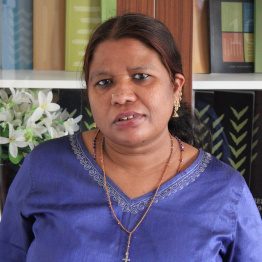Arindam Das and I have worked with detailed household level empirical data from 17 villages across nine States of India to examine the viability of small farming1. We defined small farmer households as households engaged predominantly in cultivation but with less than two hectares of irrigated land or six hectares of unirrigated land (or combinations thereof). The data came from surveys conducted by the Project on Agrarian Relations of India of the Foundation for Agrarian Studies between 2006 and 2015. All values are at 2010-11 prices.
The first variable we examined was the gross value of output (GVO) per hectare of operated area. Not surprisingly, the GVO varied hugely across villages with different agro-ecological conditions and cropping patterns. The GVO per hectare of operational holding for small farmers ranged from about Rs 16,000 in Zhapur (a rainfed village of northern Karnataka) and Rewasi (a drought-affected village of Sikar district of Rajasthan) to over Rs 90,000 in irrigated villages of Ananthavaram (Guntur district, Andhra Pradesh), Alabujanahalli (Mandya district, Karnataka), Amarsinghi (Malda district, West Bengal) and Tehang (Jalandhar district, Punjab). The low GVO per hectare was observed in rainfed villages and villages prone to frequent drought with most farmers growing only one crop a year. The villages with higher GVO per unit of area were irrigated villages. Ananthavaram is irrigated by canals from the Krishna river and is a village where two crops are grown in a year. In Tehang, there is tubewell irrigation with commercial cultivation of paddy and wheat. In Alabujanahalli, a village in the Cauvery irrigation system, high yielding paddy and sugarcane were grown. And, in Amarsinghi, newly irrigated by tubewells, there was multiple cropping of paddy, potato, and other crops.

These variations in returns from crop production among small farmers across agro-ecological regions (that is, with varying soil type, irrigation and cropping pattern) show that it is difficult to talk of the “incomes of small farmers in India” as a single category. The ratio of GVO per hectare in Rewasi, a Rajasthan village, and Alabujanahalli in the Cauvery belt of Mandya district was of the order of 1:7.
Secondly, net incomes or farm business incomes or returns to farmers depend on costs incurred. We estimated net incomes by subtracting paid out costs (or Cost A2 in official terminology) from the GVO. Again, the first striking observation is of huge diversity across villages. Net incomes per hectare among small farmers were around Rs 3,000 in Bukkacherla (Anantapur district) and Zhapur (Kalaburagi district), rainfed villages. They were over Rs 40,000 in irrigated villages of Alabujanahalli (Mandya district), Nimshirgaon (Kolhapur district), Amarsinghi (Maldah district), and Tehang (Phillaur district).
The low income villages were mainly rainfed villages or villages where a drought had occurred (Rewasi) or where there was otherwise a water shortage in the survey year. The high income villages were those with assured irrigation, multiple cropping and a crop mix that included some commercial crops (jute in Amarsinghi, sugarcane in Alabujanahalli, fruit and vegetables in Nimshirgaon).
However, there was a third category of villages with irrigation but incomes not as high as in the group above. The reasons for this relatively low income were many and diverse. To illustrate, Panahar village in Bankura district is a high cropping intensity irrigated village; nevertheless, in the survey year, potato prices crashed and there were huge losses in potato cultivation that brought down crop incomes. Cultivators in Kalmandasguri (Koch Bihar) were also affected by the crash in potato prices. The main kharif crop failed in Gharsondi (Gwalior district) in the survey year on account of a bad monsoon, poor irrigation, and a pest attack, and so on.
The third — and most worrying — observation from our study is of negative incomes or losses from crop production. In almost all villages studied, we found some cultivator households with negative incomes from crop production in the survey year. In two rainfed villages — Zhapur, in north Karnataka and Rewasi in Rajasthan — 50 per cent of small farmers suffered income losses from crop cultivation. Note, however, that animal rearing plays an important role in dry villages, and incomes from animal resources are not included in this calculation. The only irrigated village with a high proportion of loss-making cultivators was Ananthavaram in Guntur district of Andhra Pradesh. Almost 40 per cent of small farmers made losses from farming in Ananthavaram. This was on account of punishing rent payments (see Ramachandran, Rawal and Swaminathan 2010).
The reasons for negative incomes from crop production varied across villages. In the rainfed village of Zhapur and drought-affected Rewasi village, losses were primarily on account of crop failure due to poor rainfall and other weather-related factors. In villages with better access to irrigation, such as Ananthavaram in couth coastal Andhra, losses were not so much from lower production but from high costs (say of irrigation, machine labour and rent payments), that is, factors related to markets and production relations.
To sum up our discussion on absolute returns or profits from farming, first, it is clear that in rainfed villages, crop production cannot be the mainstay of a small farmer household (Rs 3,000 a hectare a year is low by any standard). Even in an irrigated village, incomes from crop production of around Rs 40,000 for an average small farmer is nothing to be happy about. Secondly, the data bring out high variability in net incomes among small farmers within a given agro-ecological context, a fact that is rarely discussed in the secondary data based literature. To put it differently, small farmers are a heterogeneous group of households. Thirdly, the fact of negative incomes or losses among small farmer households in almost all villages points to the riskiness of agriculture. Although our data are for a single year, and we are not able to track long-term incomes, nevertheless, they show that in a given year, a substantial proportion of small farmers in the study villages suffered losses from crop cultivation. Fourthly, we found that irrigation alone was not a determinant of returns from farming. Even in villages with irrigation, net incomes depended on costs and prices, which in turn, depended on a host of market factors and production relations.
[1] This is for a chapter in a forthcoming book on Small Scale Farming in India.
Reference
V. K. Ramachandran, Vikas Rawal, and Madhura Swaminathan, 2010, Socio-Economic Surveys of Three Villages in Andhra Pradesh: A Study of Agrarian Relations, Tulika Books, New Delhi.
About the author
Madhura Swaminathan is Professor and Head, Economic Analysis Unit, Indian Statistical Institute Bangalore Centre. She is also a Trustee of the Foundation for Agrarian Studies.






























































 Sudha is an Administrative Assistant of the Foundation. She assists the administrative division of the Foundation and also has taken part in fieldwork organised by the Foundation.
Sudha is an Administrative Assistant of the Foundation. She assists the administrative division of the Foundation and also has taken part in fieldwork organised by the Foundation.











